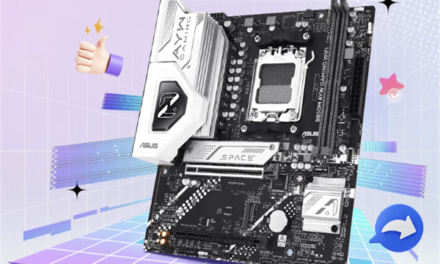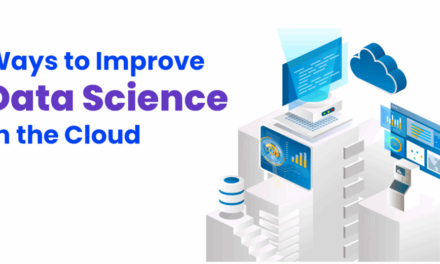
Master the Art of Learning: 7 Tips for Optimal Software Integration

Software integration plays a crucial role in the daily operations of educational institutions, from managing student data to facilitating online learning. To master the art of software integration in an educational context, you need to start by understanding the unique challenges and opportunities this sector presents.
-
Learning from Case Studies
Technology has become an integral part of the education system, with schools increasingly relying on various software to streamline various aspects of their operations. From student management systems to online learning platforms, software integration is proving to be a game-changer in enabling schools to succeed.
Case studies provide valuable insights on how software integration is optimizing operations, enhancing learning experiences, and improving student outcomes. By learning from these real-life examples, schools can leverage software integration to overcome the challenges they face and thrive in a rapidly changing educational landscape. As technology continues to advance, these case studies provide a glimpse into the possibilities and potential of software integration in education.
-
Exploring the Cost-Savings
As technology advances, more and more schools are turning to educational software as a valuable tool for learning. And it’s no wonder why – when used correctly, educational software can offer a host of benefits for students and teachers alike. Perhaps one of the most compelling advantages is the potential for cost savings.
By using educational software, schools can often reduce their expenses on costly textbooks, workbooks, and other classroom materials. Additionally, software licenses can often be purchased at a fraction of the cost it would take to buy physical textbooks for every student in a class. These savings can add up significantly over time, paving the way for a more financially sustainable future for schools.
But the benefits of educational software don’t stop at financial savings – it can also help boost student engagement, customization of learning, and more. investing in educational software is a smart move that can pay dividends not just for schools, but for students as well.
-
Collaborative Communication
The success of any software integration project, especially in the educational sector, hinges on effective and collaborative communication. Educational institutions involve a multitude of stakeholders, from teachers and students to administrative staff and IT professionals.
To ensure the seamless flow of information and the harmonious execution of software integration, it’s crucial to foster open and continuous communication within your team. Regularly providing updates on progress, discussing challenges, and sharing insights can significantly enhance teamwork and lead to better outcomes.
Moreover, establishing a clear chain of command and allocating specific roles and responsibilities to each team member is essential. This meticulous planning not only facilitates efficient task execution but also mitigates any potential confusion or delays. A harmonious working environment that fosters effective communication is the key to a successful software integration project in the educational sector.
-
Utilizing Helpful Tools
In the ever-evolving landscape of software integration, selecting the appropriate tools and platforms is pivotal for project success. Utilizing appsanywhere.com or similar approaches, offers educational institutions tailored solutions for software integration, allowing for centralized and efficient management of applications across various devices and platforms. It’s important to consider the long-term impact of the chosen tools on the operational workflow and whether they can accommodate future growth and technological advancements.
Adopting a thoughtful approach to tool selection can prevent potential hurdles down the line, ensuring the smooth progression of integration projects and maintaining the integrity of IT infrastructure. In light of this, the decision-making process should center on scalability, reliability, and usability.
-
Analyzing Educational Research
To understand the effectiveness of software integration in education, it is important to analyze the educational research on the topic. This type of research can provide valuable insights into how technology can support and enhance student learning. By examining the data and findings of various studies, educators can gain a better understanding of how to effectively incorporate software into their teaching practices.
It is crucial to analyze not only the benefits but also the potential challenges and limitations of software integration in education. With a comprehensive understanding of the research, educators can make informed decisions about how to implement technology in the classroom to maximize student outcomes.
-
Gaining New Insights
Software integration opens a world of possibilities for enhancing learning experiences in the classroom. It can transform traditional teaching methods, making lessons more engaging and interactive. For instance, using multimedia software can bring subjects to life, allowing students to explore concepts visually and auditorily. Tools like digital whiteboards and presentation software can facilitate collaboration and group learning.
Additionally, learning management systems can streamline assignment distribution, grading, and feedback, saving teachers valuable time and allowing for more individualized instruction. By leveraging the right software tools, educators can create a dynamic learning environment that caters to different learning styles and paces, ultimately helping students reach their full potential.
-
Embracing the Future
As educators and students continue to navigate the digital landscape, it’s clear that software integration will continue to play a pivotal role in shaping the future of education. It’s important for educational institutions to stay agile and adaptable, ready to embrace new technological advancements as they arise. Artificial Intelligence (AI), Virtual Reality (VR), and Augmented Reality (AR) are just a few examples of innovative technologies poised to further revolutionize the educational sector.
By staying ahead of these trends and continually adapting to changes, educators can ensure they are providing their students with the most relevant and effective learning tools available. These advancements could provide unprecedented opportunities for immersive and experiential learning, taking software integration in education to new heights.
The integration of software into education is not a mere trend, but an essential progression that has serious implications for the future of learning. As our world becomes increasingly digitized, the ability to successfully integrate software into educational practices is crucial. From fostering more engaging learning experiences to cutting operational costs, the benefits are wide-ranging.
However, these advantages can only be fully realized with careful planning, open communication, and the correct use of effective tools. As we continue to embrace technological advancements like AI, VR, and AR, the possibilities for software integration in education seem limitless. By staying adaptable and forward-thinking, educators can harness this potential, shaping a future of education that is both exciting and promising.


























